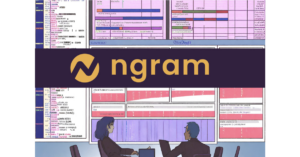In today’s increasingly digital world, ensuring the security of your data and information has become more critical than ever. With cybercriminals constantly devising new ways to breach systems, it is essential for individuals and organizations to stay one step ahead and adopt best practices for cybersecurity. Preventing breaches requires a proactive approach that focuses on both technology and human behavior. Here, we will explore some of the top best practices to help safeguard against cyber threats.
1. Keep Software and Systems Up to Date:
Regularly updating your software, operating systems, and applications is crucial to prevent breaches. Software vendors release patches and updates to fix vulnerabilities that may be exploited by hackers. By ensuring that all software and systems are up to date, you can significantly reduce the risk of being targeted.
2. Implement Strong Password Policies:
The use of strong and unique passwords is one of the simplest yet most effective ways to protect against unauthorized access. Encourage employees to create complex passwords that combine uppercase and lowercase letters, numbers, and special characters. Enforcing regular password changes further enhances security.
3. Enable Multi-Factor Authentication:
Implementing multi-factor authentication adds an extra layer of security, making it much harder for attackers to gain unauthorized access. This authentication method requires users to go through an additional verification step, such as entering a unique code sent to their mobile device, further safeguarding crucial information.
4. Educate Your Employees:
Employees are often the weakest link in cybersecurity, unintentionally falling victim to phishing attacks or inadvertently divulging sensitive information. Conduct regular cybersecurity training sessions to educate employees on best practices, such as identifying phishing emails, avoiding suspicious websites, and being vigilant while handling sensitive data.
5. Limit Privileged Access:
Limiting access to sensitive systems and data on a need-to-know basis is crucial to preventing breaches. Granting privileged access to only authorized personnel helps reduce the risk of unauthorized use or intentional misuse. Regularly reviewing and revoking unnecessary access privileges further enhances security.
6. Regularly Back Up Data:
Regularly backing up essential data is essential in the event of a breach or system failure. By keeping secure copies of critical information offsite, you can quickly restore your systems and resume normal operations. Ensure backups are regularly tested to ensure data integrity.
7. Implement Network Monitoring and Intrusion Detection Systems:
Employing network monitoring and intrusion detection systems allows you to detect any unauthorized activities or patterns within your network. It enables timely identification of potential threats, ensuring that prompt action can be taken to mitigate risks before they escalate.
8. Develop an Incident Response Plan:
Having a well-defined incident response plan in place enables a rapid and effective response to security breaches. It should outline the immediate actions to be taken, the responsibilities of each team member, and a step-by-step process to contain the breach, investigate its cause, and restore normalcy as soon as possible.
9. Regularly Perform Security Assessments:
Conducting regular security assessments, such as penetration testing and vulnerability scanning, helps identify weaknesses in your system’s defenses. By proactively identifying vulnerabilities, you can address them before they can be exploited by attackers.
10. Stay Informed about the Latest Threats:
The field of cybersecurity is ever-evolving, with hackers constantly finding new ways to breach systems. Staying informed about the latest threats and trends allows organizations to adapt their security measures accordingly. Regularly reading cybersecurity news and subscribing to industry alerts significantly enhances your ability to prevent breaches.
In conclusion, preventing breaches requires a combination of proactive measures, including technological safeguards and a security-conscious workforce. By implementing these best practices, individuals and organizations can significantly reduce the risk of security breaches and protect their data from cyber threats. Remember, cybersecurity is an ongoing process that requires constant vigilance and adaptation to stay one step ahead of cybercriminals.




